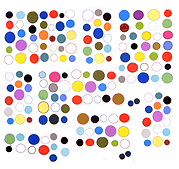Godwin's Law was an old blogosphere joke -- "a discussion thread has outlived its usefulness as soon as Hitler or Nazis are mentioned."
On bogchat, user tommoody started with the Godwin observation that people like to call the Pres a nazi but Amazon's CEO is the real nazi.*
An observation like this serves no real purpose except to make the typist feel better.
Nevertheless bogchat troll ytho, a sort of radical Green with libertarian tendencies, pounced. "He's not a nazi he's the classic neoliberal."
This actually led to an argument over the right epithet to call the CEO.
*aggressive monopolist (i) assumes governmental powers such as subsidizing housing for seniors in warehouse sweatshops, (ii) owns national media for propaganda purposes, (iii) subverts democracy through lobbying, (iv) works with national security state by providing server infrastructure. True, there is no brownshirt or nativist element (yet).
